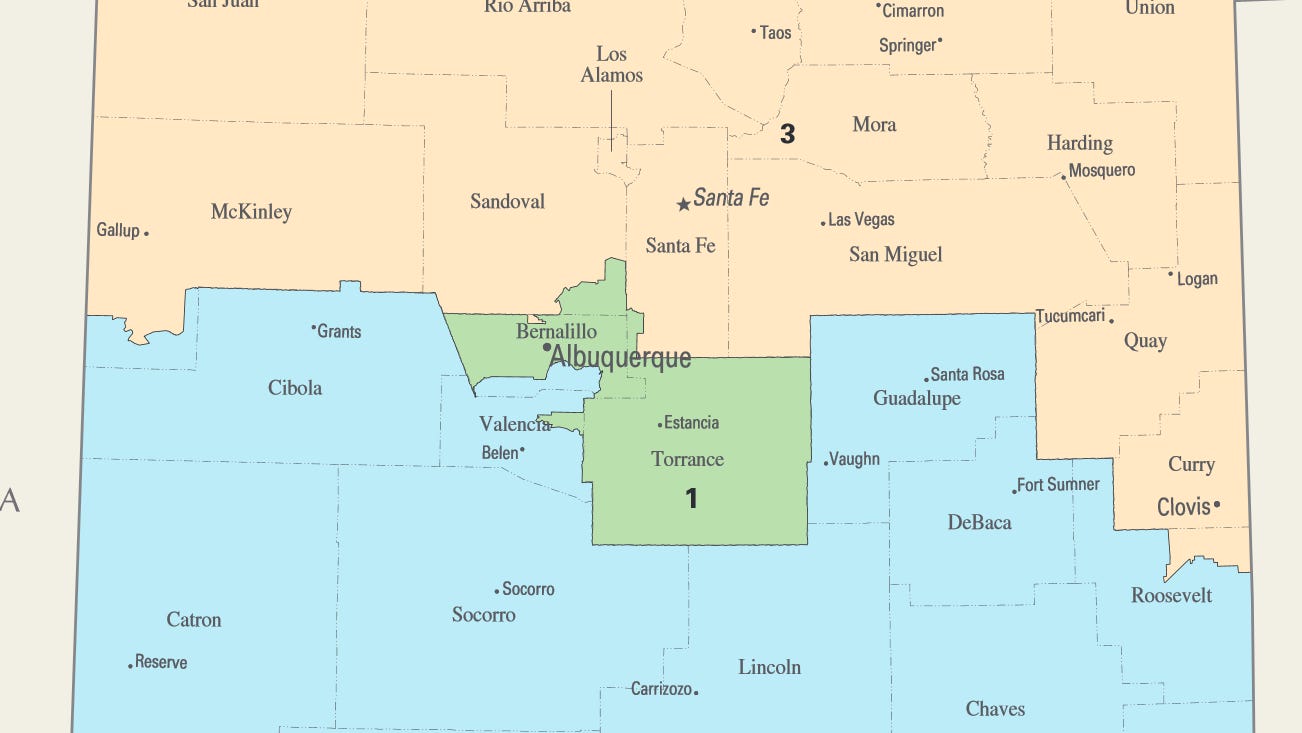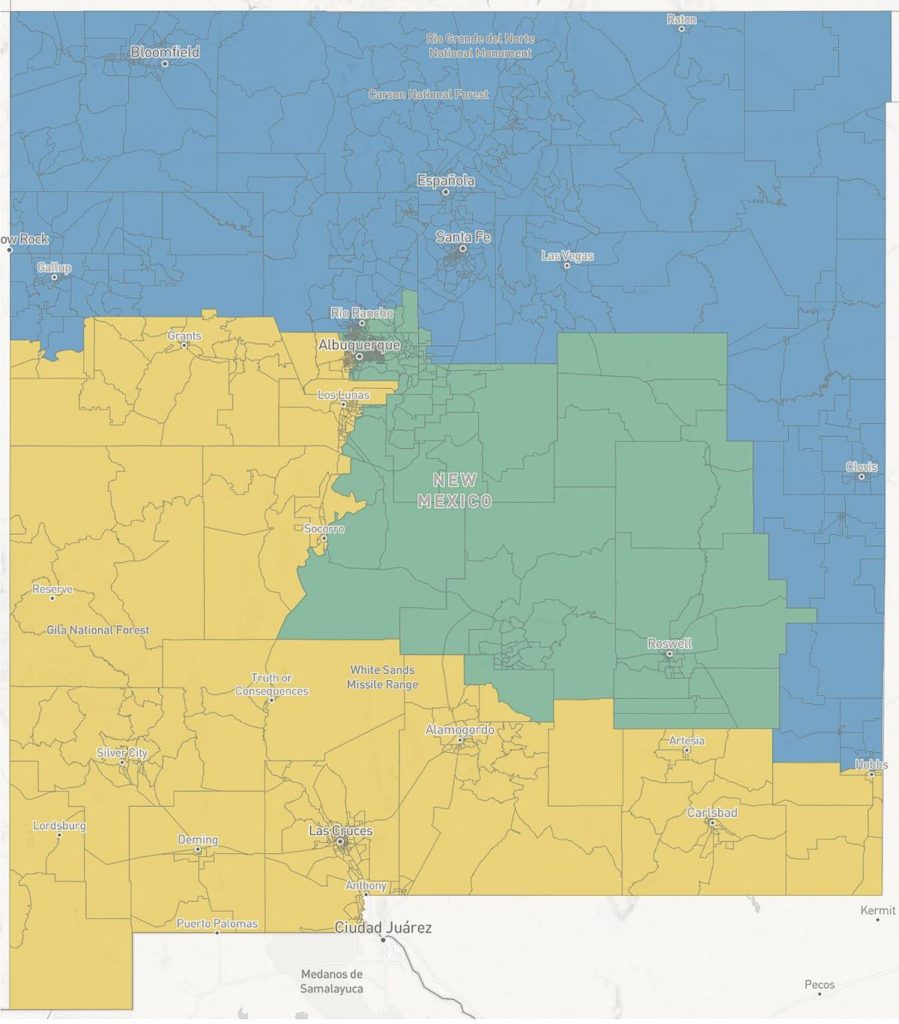
Governor Michelle Lujan Grisham late on Friday, December 17 signed into law the new redistricting plan for the State of New Mexico which changes the shape of the state’s previous congressional districts (pictured above).
Although the dust has hardly settled and the ink is barely dry, her signature has split Lea County into two districts. The City of Hobbs, with a population of around 40,000 people, is now divided into two districts. According to the New Mexico House of Representatives, the map is a “nearly 90 percent reflection” of what was called the “People’s Map,” produced by an independent Citizens Redistricting Committee.

A Contentious Process
The redistricting plan has been a grand theater of contention and partisan politics. Accusations of gerrymandering have filled the air, and the old expression “you can’t please all of the people all of the time” has never proven more true. Various justifications for the new districts are out there – some ringing true while others have folks crying foul.
The new redistricting map changes the structure of New Mexico districts. No longer are groups of population with often similar beliefs necessarily grouped together. Urban, rural, and economic strongholds have been broken up.
This division was a goal. One of the leading intentions behind the new breakdown was to ensure that each district has a variety of constituents better reflecting the diversity of interests in New Mexico as a whole. The previous map resulted in strong divides between oil and tourism, between city and country, between Democrat and Republican.
Importantly, the new districts are a blend of urban and rural areas creating much less polarized districts. However, some Republicans feel this dilutes the conservative vote. According to Democrats, new redistricting is more representative of the general population of New Mexico.
While it is still early to know how this might affect the politics of New Mexico, one thing is clear: the oil and gas industry has a much stronger hold on the state. The Permian Basin, with its economically oil based population, is now divided among the three districts. This new structure places a portion of the oil and gas economy in all districts and divides the traditional conservative voting block. All of this is significant for Lea County as a leader in New Mexico’s oil & gas.
Previously, the industry had large control over a single NM congressional district, but this new map makes oil & gas a vital industry every congressional representative from NM will need to pay close attention to.
New Voices Heard
New Mexico is home to 23 federally recognized Native American communities and their joining together to make their voices heard about new redistricting was an impressive feat. Indigenous voices often go unheard in American politics, but the Native Americans communities of New Mexico made their positions clear and their input has been incorporated into the new map.
This sector of New Mexico’s population is now becoming an integral part of the fabric of New Mexico’s political structure. Tribal leaders have been successful in bolstering Native American influence in the political process amid their dissatisfaction with public education, access to basic household infrastructure and economic opportunities.
Time Will Tell
It is too early to tell what the overall effect will be, particularly as populations and demographics change throughout the state. Many have speculated about the impact this change will have long term, and some suggest that lawsuits will be filed.
Today, no one knows. No one possesses a crystal ball that will accurately predict how the courts might rule or how New Mexicans will actually vote, nor how some cities might grow or decline in numbers.
The one thing that is clear is that some important rethinking of New Mexico politics is in the air. Strategic changes will be required by both parties as they vie for control in coming elections.
Lea County voters, as well as all New Mexico electors, face the next decade – yes, the next 10 years – with districts very different from the ones of yesterday.


